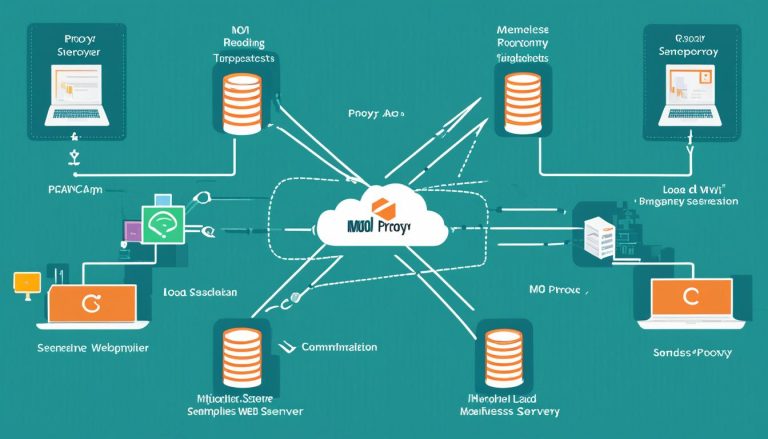What are ACID Properties in Database Management
In the world of database management, ACID properties play a crucial role in ensuring data integrity and consistency. ACID stands for Atomicity, Consistency, Isolation, and Durability, and these properties define the behavior of a transaction within a database.
ACID transactions guarantee that a database will be in a consistent state after running a group of operations. Whether it impacts a single record or multiple records, ACID ensures that changes made within a transaction are reliable and coordinated.
Key Takeaways:
- ACID properties (Atomicity, Consistency, Isolation, Durability) are essential for maintaining data integrity in a database.
- ACID transactions ensure that a group of database operations either succeed or fail together.
- ACID transactions are particularly important in scenarios where related data is split across multiple records or documents.
- MongoDB, a popular database, supports multi-document ACID transactions for use cases that require them.
- Developers must consider resource constraints and performance goals when working with ACID transactions in a distributed system.
What are ACID Transactions?
ACID transactions are a group of database read and write operations that ensure data consistency and integrity. These transactions only succeed if all the operations within the transaction succeed. ACID transactions can impact a single record or multiple records in a database.
Let’s consider an example of a money transfer function. When transferring funds between accounts, two operations need to occur simultaneously: debiting the source account and crediting the destination account. In an ACID transaction, either both operations happen successfully, or both operations do not happen at all, ensuring the database remains in a valid and consistent state.
ACID transactions play a crucial role in ensuring data reliability and preventing inconsistencies in a database. By grouping related database operations into a single transaction, ACID guarantees that the entire transaction is treated as a single unit. This ensures that the database remains in a valid state, even if an error occurs during the transaction.
In addition, ACID transactions can impact both single records and multiple records within a database. Whether it’s updating a single customer’s information or modifying multiple orders in an e-commerce system, ACID transactions provide the necessary guarantees for data integrity.
By utilizing ACID transactions, developers can have peace of mind knowing that the database remains consistent, even in complex scenarios involving concurrent access or system failures. These transactions enforce the atomicity, consistency, isolation, and durability properties, forming the foundation for reliable and predictable database operations.
In the next section, we will explore the ACID properties of a transaction in more detail.
The ACID Properties of a Transaction
In database management, transactions adhere to a set of properties known as ACID: Atomicity, Consistency, Isolation, and Durability. These properties ensure that transactions are executed reliably and maintain data integrity. Let’s explore each of these properties in detail:
1. Atomicity
The atomicity property guarantees that all commands within a transaction are treated as a single unit. This means that either all of the commands within the transaction succeed, or none of them do. If a failure occurs at any point during the transaction, all changes made by the transaction are rolled back, ensuring that the database remains in a consistent state.
2. Consistency
The consistency property ensures that changes made within a transaction are consistent with the database’s constraints. In other words, the database remains in a valid state before and after the transaction. If a transaction violates any constraints defined for the database, it is rolled back, preserving the consistency of the data.
3. Isolation
The isolation property guarantees that transactions can run concurrently without interfering with each other. Each transaction operates as if it is the only transaction being executed, ensuring that changes made by one transaction are isolated from the changes made by other concurrent transactions. This prevents any unwanted interactions or inconsistencies that may occur when multiple transactions are executed simultaneously.
4. Durability
The durability property ensures that once a transaction is complete, its changes are persisted and will survive any system failures. This means that even if there is a power outage or a system crash, the changes made by the transaction are saved and will be available when the system recovers. Durability is crucial for maintaining data reliability and ensuring that transactions are not lost due to unforeseen circumstances.
These ACID properties work together to provide a robust and reliable framework for managing database transactions. By adhering to these properties, developers can ensure the integrity and consistency of their data, even in the face of failures or concurrent operations.
The ACID properties of a transaction form the foundation of reliable and consistent data management. The next section will delve into the importance of ACID transactions and their role in maintaining data consistency.
The Importance of ACID Transactions
ACID transactions play a crucial role in ensuring data consistency within a database. When dealing with scenarios where related data is distributed across multiple records or documents, multi-record or multi-document ACID transactions become essential for maintaining data integrity. While MongoDB’s document model reduces the need for multi-document transactions in many cases, there are still situations where ACID transactions are necessary to ensure the accuracy and reliability of data updates and changes.
ACID transactions provide developers with peace of mind by guaranteeing that updates and changes to the database are coordinated and applied reliably. By using ACID transactions, developers can confidently perform complex operations involving multiple records, ensuring that all changes are applied as a single unit and that the database remains in a consistent state.
Whether it’s a financial system handling money transfers or an inventory management system updating stock levels, maintaining data consistency is crucial for the proper functioning of applications that rely on databases. ACID transactions ensure that multi-record operations are executed atomically, preserving the integrity and reliability of data.
Benefits of ACID Transactions
Implementing ACID transactions offers several benefits:
- Data Consistency: ACID transactions guarantee that changes made to the database are consistent and adhere to the predefined constraints, ensuring data accuracy and integrity.
- Database Models: In cases where data is distributed across multiple records or documents, ACID transactions allow developers to perform operations on these related entities while maintaining data consistency.
- Multi-Record Transactions: ACID transactions provide developers with the ability to perform operations on multiple records or documents as a single unit, ensuring that all changes within the transaction succeed or fail together.
Example: Multi-Record ACID Transaction
Let’s consider an e-commerce application where a customer places an order. To ensure data consistency, the application needs to perform the following actions as a single transaction:
- Reduce the quantity of the ordered items in the inventory.
- Create a new order record in the Orders collection.
- Debit the customer’s payment method for the order total.
- Update the customer’s loyalty points based on the total purchase amount.
By encapsulating these operations within an ACID transaction, the application ensures that all changes are applied together. If any of these steps fail, the entire transaction is rolled back, maintaining the consistency of the database.
| Benefits of ACID Transactions | Example |
|---|---|
| Data Consistency | Ensures that inventory, orders, payment, and loyalty points are updated consistently. |
| Database Models | Allows operations on related entities within a transaction. |
| Multi-Record Transactions | Performs the order creation and updates as a single unit. |
ACID transactions bring reliability and consistency to applications that require multi-record operations. While the MongoDB document model reduces the need for multi-document transactions in many cases, ACID transactions remain essential for maintaining data integrity and ensuring accurate and reliable updates.

How ACID Transactions Work in MongoDB
MongoDB, starting from version 4.0, now supports multi-document ACID transactions. While MongoDB’s document model allows for storing related data together in a single document, thereby reducing the need for multi-document transactions in most cases, there are scenarios where multi-document ACID compliance becomes essential.
To enable multi-document ACID transactions, MongoDB follows a similar approach to transactions in other databases. Developers can initiate a MongoDB session and utilize it to execute a group of database operations, including CRUD operations across multiple documents and collections.
When utilizing transactions in a distributed system, it is crucial to consider resource constraints and performance goals. While ACID transactions in MongoDB facilitate coordination and reliable application of updates and changes, ensuring the desired data integrity, developers must be mindful of the distributed nature of the system.
MongoDB’s ability to handle multi-document transactions provides developers with flexibility, allowing them to choose the appropriate transaction level based on their application’s requirements. By providing ACID compliance, MongoDB ensures data consistency, even in scenarios where related data is spread across multiple documents or collections.
FAQ
What are ACID transactions?
ACID transactions are a group of database read and write operations that only succeed if all the operations within the transaction succeed. They can impact a single record or multiple records, ensuring that the database remains in a valid and consistent state.
What are the ACID properties of a transaction?
The ACID properties of a transaction are atomicity, consistency, isolation, and durability. Atomicity ensures that all commands within a transaction are treated as a single unit. Consistency guarantees that changes made within a transaction are consistent with database constraints. Isolation ensures that transactions can run concurrently without interfering with each other. Durability ensures that once a transaction is complete, its changes are persisted even in the event of system failures.
Why are ACID transactions important?
ACID transactions are important because they ensure data consistency in a database. They guarantee that updates and changes are coordinated and applied reliably, providing peace of mind for developers.
How do ACID transactions work in MongoDB?
In MongoDB, ACID transactions work across the cluster and operate similarly to transactions in other databases. Developers can start a MongoDB session and use it to execute a group of database operations, including CRUD operations across multiple documents and collections. When multi-document ACID compliance is required, MongoDB transactions ensure data integrity even in distributed systems.
- About the Author
- Latest Posts
Janina is a technical editor at Text-Center.com and loves to write about computer technology and latest trends in information technology. She also works for Biteno.com.






